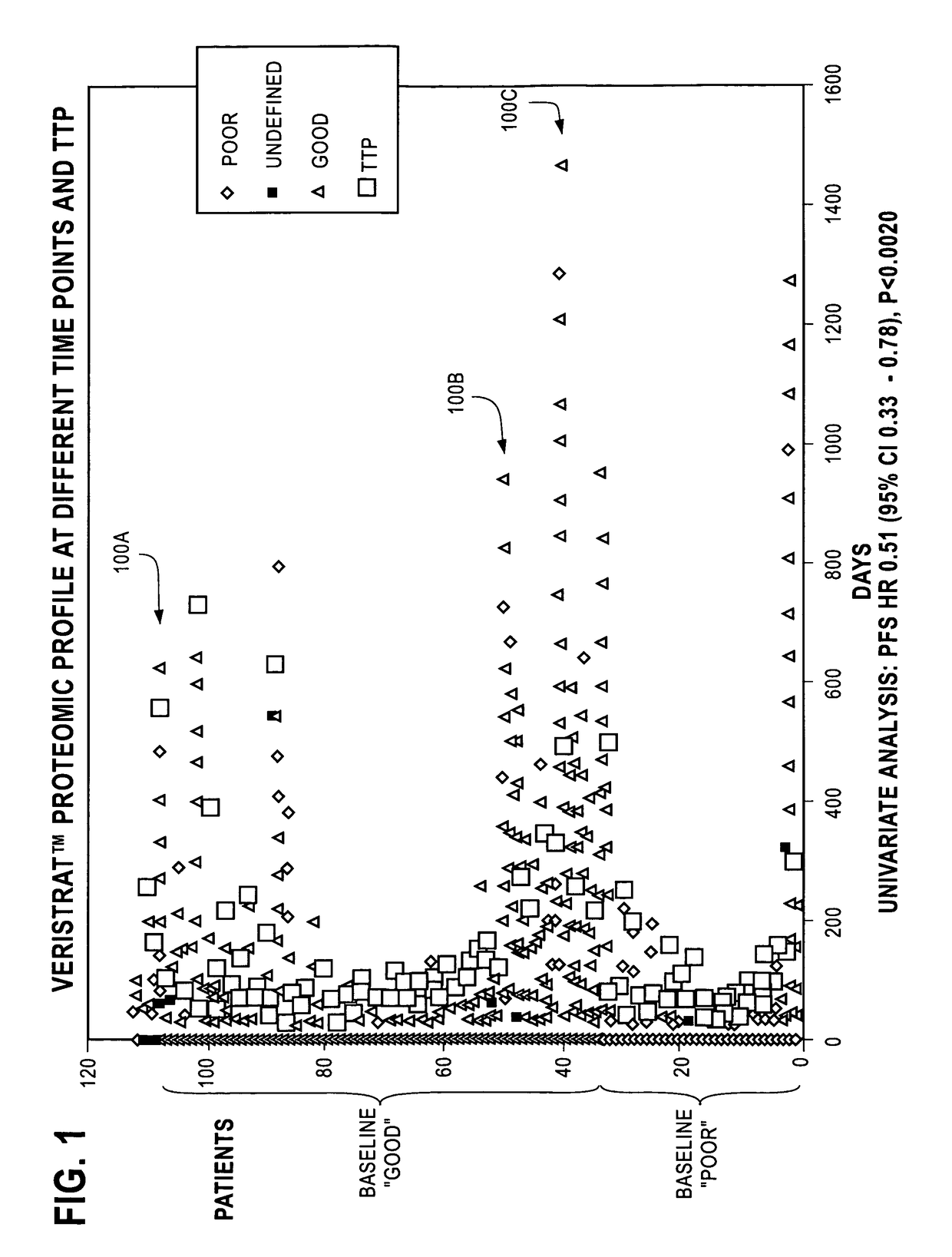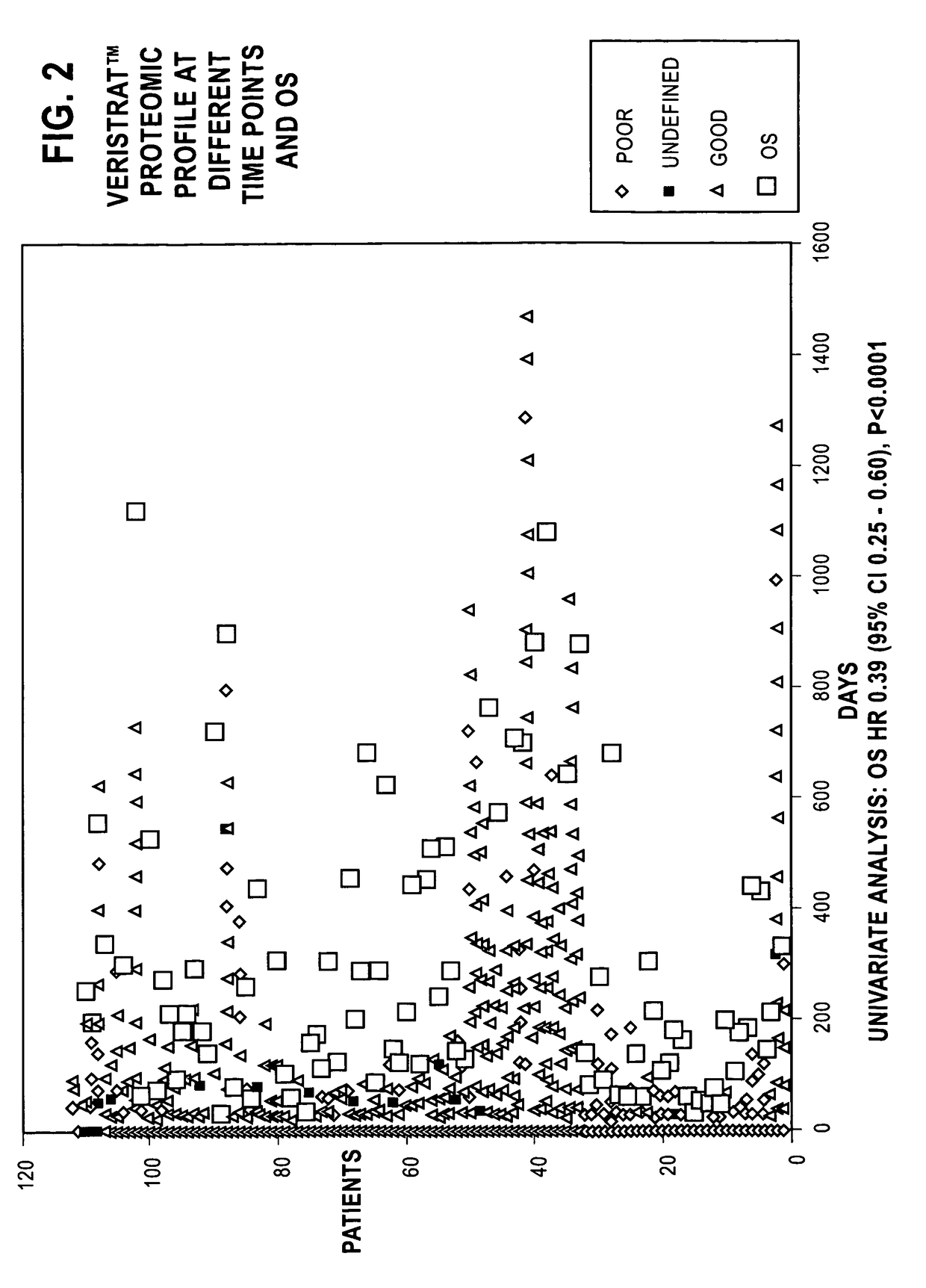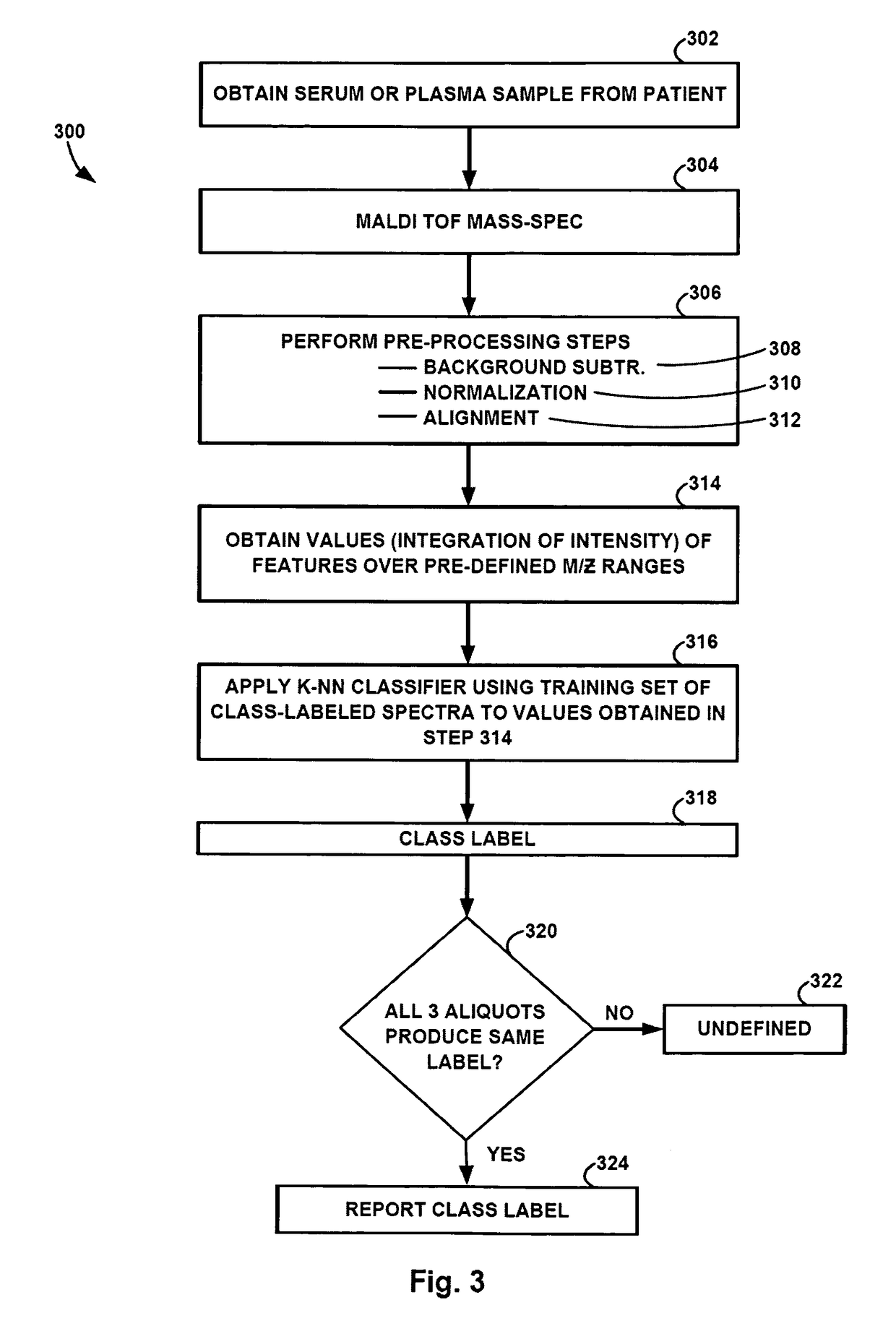Monitoring treatment of cancer patients with drugs targeting EGFR pathway using mass spectrometry of patient samples
a technology of epidermal growth factor receptor and mass spectrometry, which is applied in the direction of proteomics, biological material analysis, and material analysis by using resonance. it can solve the problems of poor treatment of nsclc, no substantial benefit, and not always possible depending on the type of cancer patien
- Summary
- Abstract
- Description
- Claims
- Application Information
AI Technical Summary
Benefits of technology
Problems solved by technology
Method used
Image
Examples
example
[0055]Methods for how this invention can be practiced will now be described in further detail. As an initial step, a baseline classification of a plasma or serum sample of the patient using mass spectrometry and classification using a training set is obtained, in the manner described in detail in our prior application published as U.S. 2007 / 0231921. The methodology is shown in FIG. 3 described below. If the class label for the patient sample is “good”, the result indicates that the patient is likely to benefit from a drug targeting the EGFR pathway, such as gefitinib, erlotinib or cetuximab. The patient is then prescribed one of these drugs.
[0056]During the course of treatment by administration of an EFGR-I drug, the patient is monitored periodically to determine whether the class label for a serum sample of the patient has changed. A change from “good” to “poor” indicates that the patient may be developing a non-responsiveness to further administration of the EGFR-I drug. This moni...
PUM
| Property | Measurement | Unit |
|---|---|---|
| median time | aaaaa | aaaaa |
| median time | aaaaa | aaaaa |
| mass | aaaaa | aaaaa |
Abstract
Description
Claims
Application Information
 Login to View More
Login to View More - R&D
- Intellectual Property
- Life Sciences
- Materials
- Tech Scout
- Unparalleled Data Quality
- Higher Quality Content
- 60% Fewer Hallucinations
Browse by: Latest US Patents, China's latest patents, Technical Efficacy Thesaurus, Application Domain, Technology Topic, Popular Technical Reports.
© 2025 PatSnap. All rights reserved.Legal|Privacy policy|Modern Slavery Act Transparency Statement|Sitemap|About US| Contact US: help@patsnap.com



